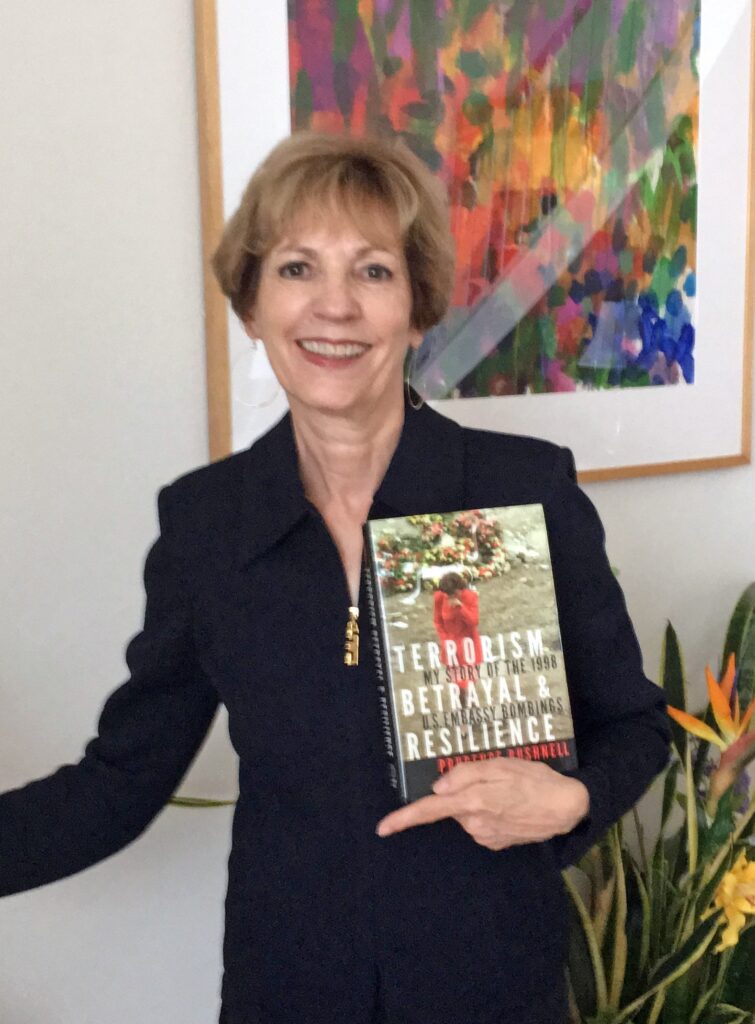
On August 7, 1998, Prudence Bushnell’s office building exploded. She was blown across the room by what she called “a loud wave of freight-train force.” She slowly pulled herself to her feet. Then she and other members of her embassy staff tiptoed their way through concrete debris, pools of blood, slippery steel and clouds of smoke down several flights of stairs to the streets of Nairobi below.
Pru Bushnell was the U.S. Ambassador to Kenya when our embassy was bombed by anti-American Muslim extremists. Her book Terrorism, Betrayal & Resilience is a thorough examination of that event and the leadership that occurred before, during and afterwards.
If you think your organization is complicated… ! I was astounded at the complexity of her work environment. She had to navigate the Foreign Service division of the massive State Department, through its scores of countries and bureaus, through the complexity of protocols and policies, rituals of bereavement and rules of accountability, all operating across multiple cultures, languages and personalities. Later came the commissions, the reports, the egos, and the political posturing that accompanied everything.
I was thankful for the relative simplicity of my workplace!
Pru Bushnell studied leadership for years after that experience and founded the Leavitt Leadership Institute at Hamilton College. In her book she outlines leadership that can function in that degree of complexity. She makes one wise point in particular.
Transparency
She quotes Peter Drucker’s distinction that management is “doing things right” and leadership is “doing the right thing.” Managers bring order, consistency and control to their organizations. There’s no clarity or cohesion without it. And leaders bring value, direction and purpose. There’s no integrity without it.

Bushnell suggests that one sweet spot where management and leadership can meet is transparency. Doing things right and doing the right thing can meet in visibility. Good management and good leadership take the time to be clear, public, and intentional. Values and principles are explained and reinforced and open to feedback. Trust develops.
By contrast, Bushnell’s organization was and is notorious for protecting the originators of policy. Strategic decisions made in secret prevent accountability and ultimately provoke suspicion and resentment. Customers and stakeholders know well the frustration of being told “It’s policy” and having no recourse beyond that brick wall.
Even in personnel situations, I would suggest, greater degrees of visibility and accountability can ultimately do more good than harm. There are always times when confidentiality is essential. But in most cases the organization is harmed more by secrecy than any individual is by transparency.
We do well to opt for more openness, not less, because then there is more accountability. Opt for more visibility, not less, because then there is more honesty.
In the 10th chapter of Matthew, Jesus charges his followers to live by these words: “What I say to you in the dark, say in the light. What comes to your ear secretly, say publicly from the housetops.”
Consider what that might look like in your organization. How will you prioritize the value of transparency?
Larry Buxton is the author of 30 Days With King David: On Leadership (Front Edge Publishing, 2020). You can receive his weekly column Leading With Spirit, insights on character and leadership, in your mailbox each week by adding your email address to the block at the upper left.
